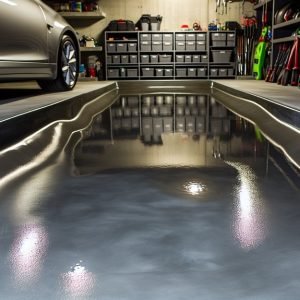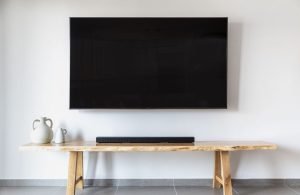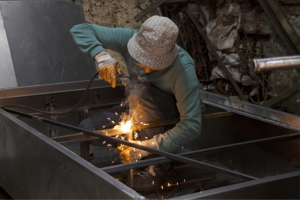Last Updated on October 30, 2025 by teamobn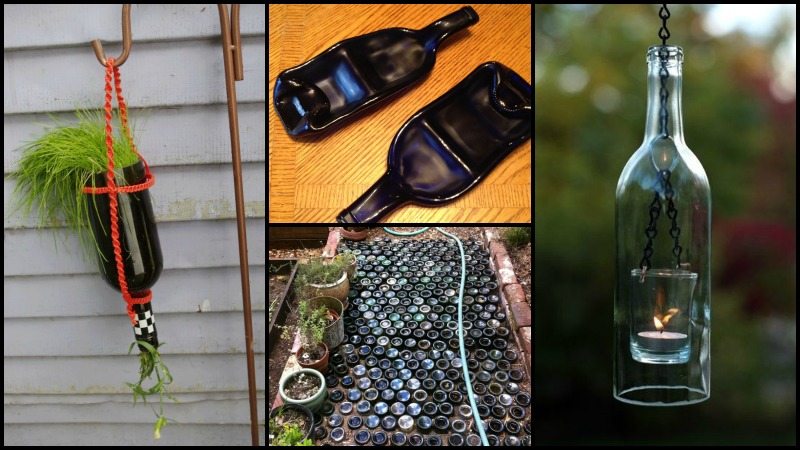
Drink a bottle of wine, throw the empty in the recycling bin, right? Don’t drink wine? Then empty wine bottles are still pretty easy to come by! A couple of quick calls and you’ll probably have all you need…
Here are some great methods to re-purpose wine bottles you can do with those empty bottles that will make you want to get busy next weekend.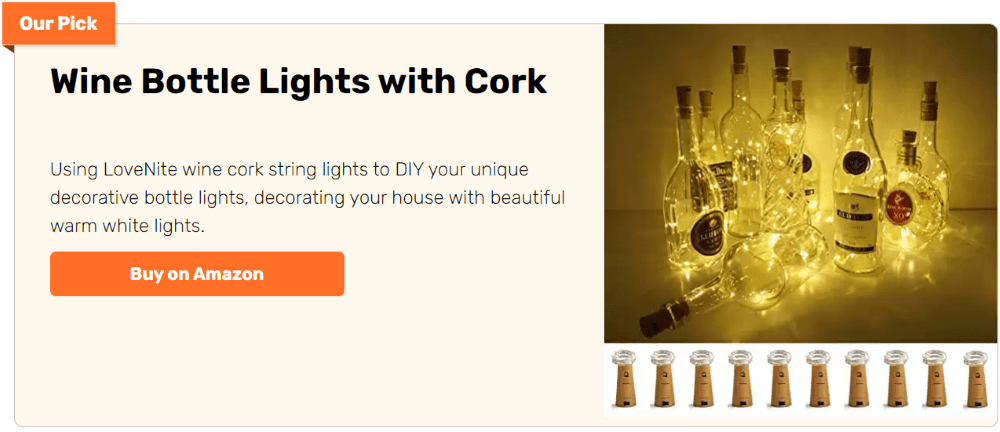
If you enjoy wine, you’ll know that some of the bottles are almost as nice as the contents! So why stop the enjoyment when the bottle is empty? strangely, wine is documented to have many therapeutic benefits 😉 😉 😉 converting empty bottles into beautiful things never gets a mention!
Let’s put an end to that knowledge gap right now by re-purposing some of those empties into gorgeous yet functional ornaments!
Click on any image to start the lightbox display. Use your Esc key to close the lightbox. You can also view the images as a slideshow if you prefer ![]()
Contents
Ways to Re-Purpose Wine Bottles
You can cut wine bottles in half and arrange them like funnels for your rain chain. They also make lovely decors during the day when sunlight hits these recycled wine bottles. 🙂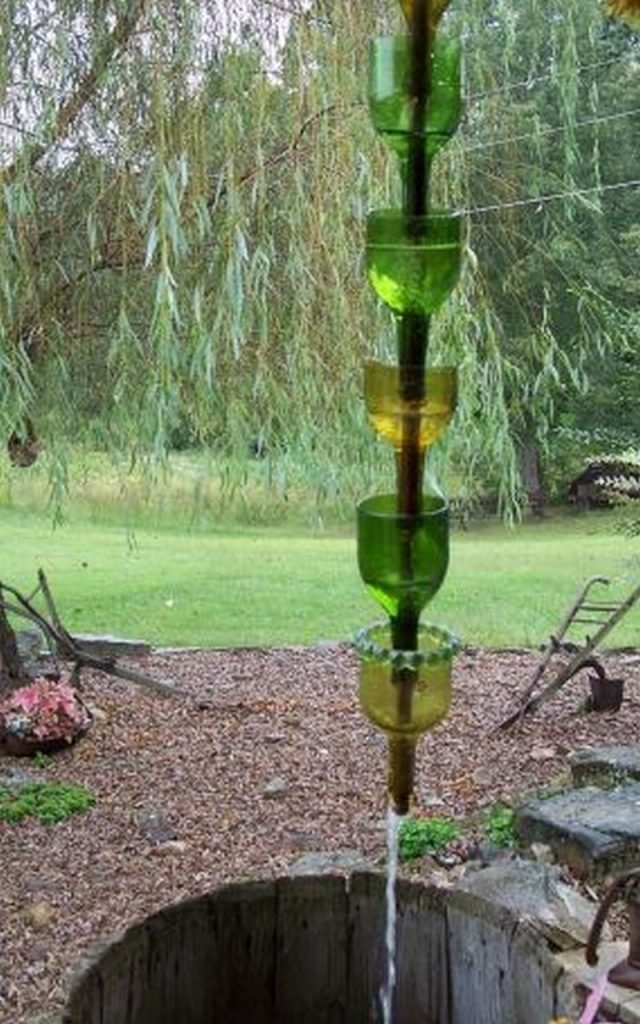
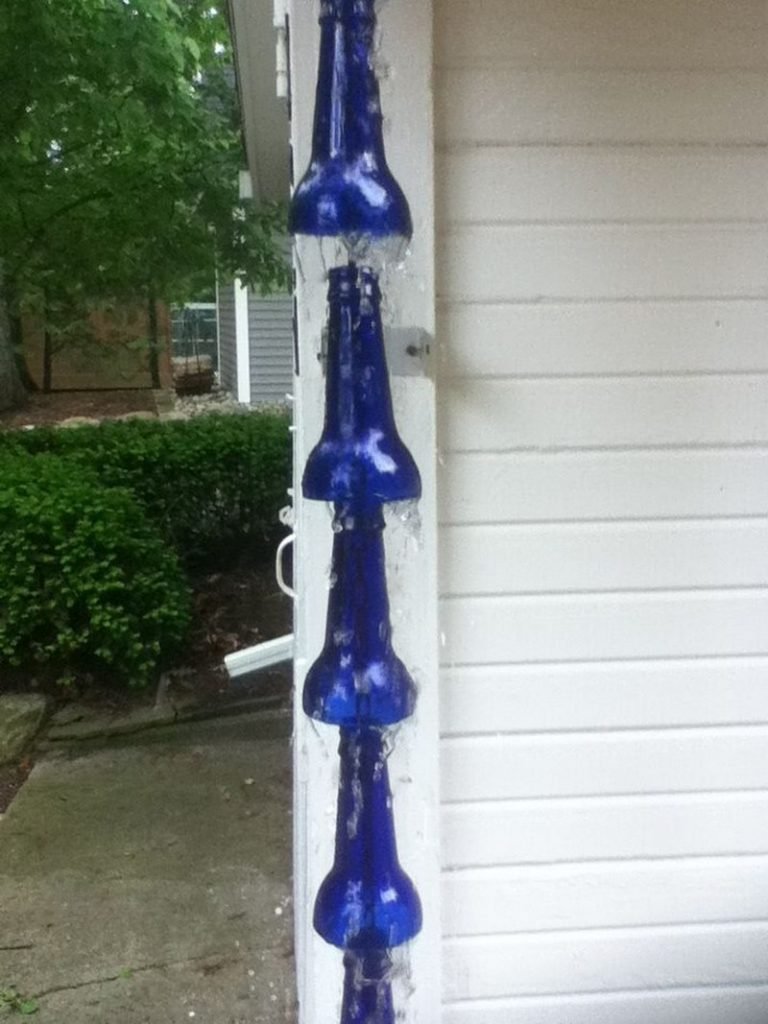
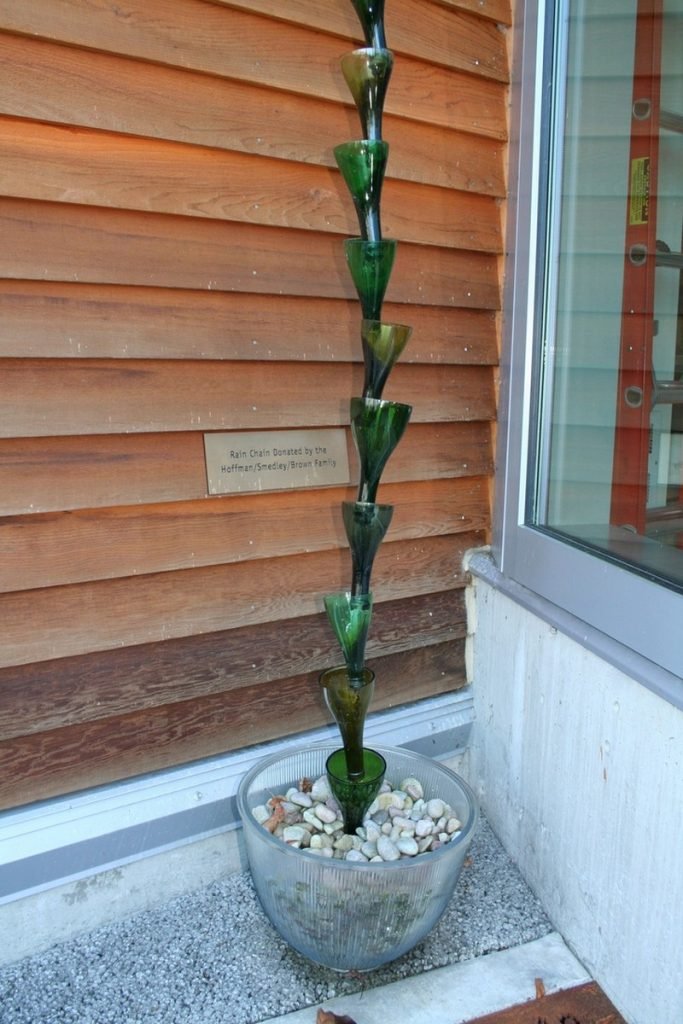
Here’s a stylish lighting idea for your favorite outdoor area. And instead of using a regular torch fuel, use citronella flavor to ward off mosquitoes. Tiki torches, also known as tiki lamps, are decorative torches made with small, carved wood pieces. Tiki torches are generally used as outdoor lighting.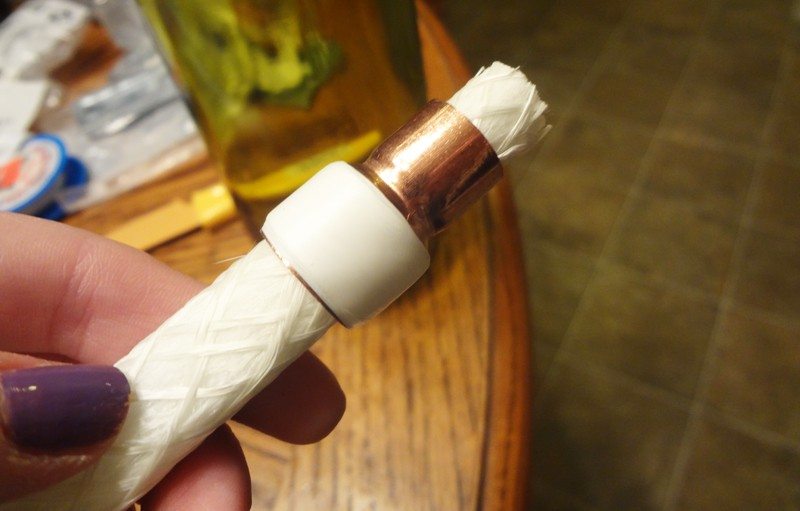
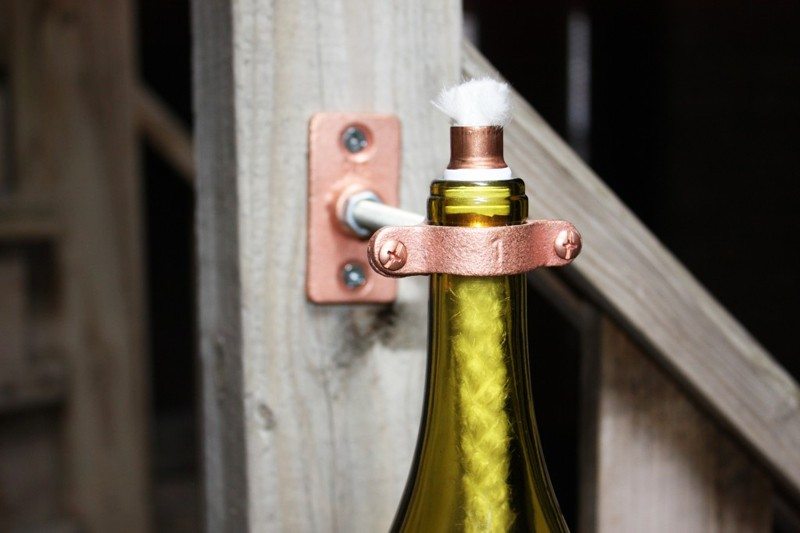
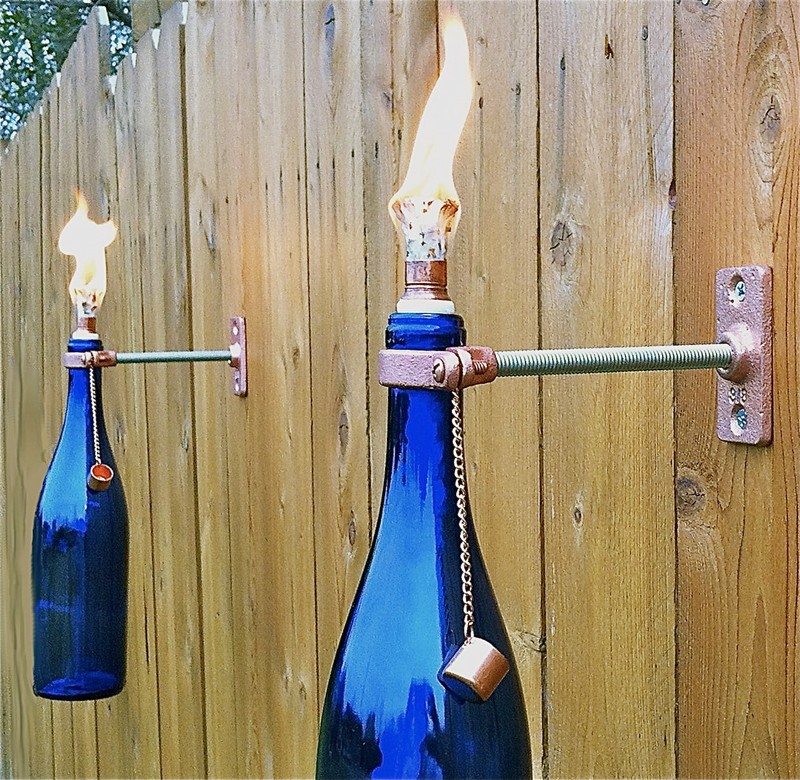
Inverted Wine Bottle Planter
Whether you’re looking for indoor or outdoor planters, wine bottles make pretty hanging ‘pots’ for your plants. All you need to do is to cut the bottom of the wine bottle, tire a rope around to hang it, and plant your favorite hanging plant in it.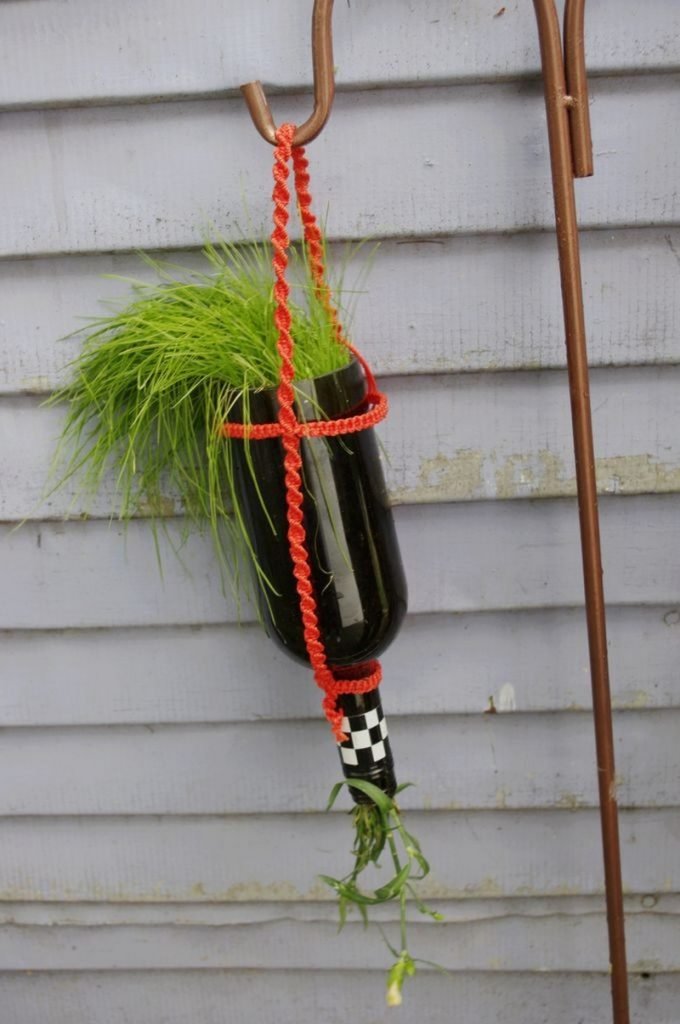
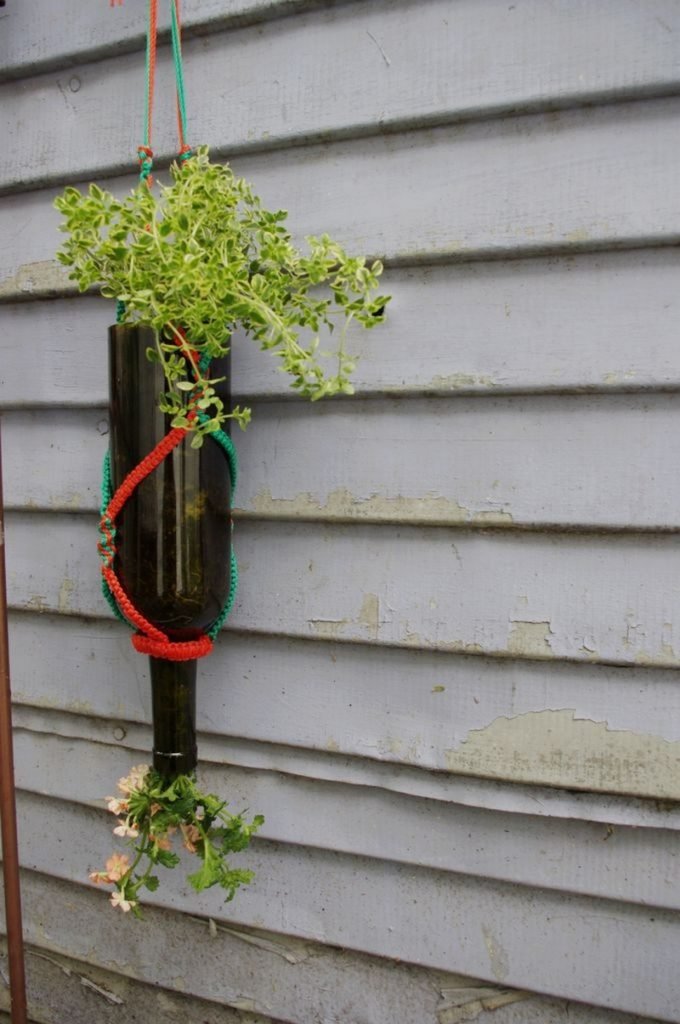
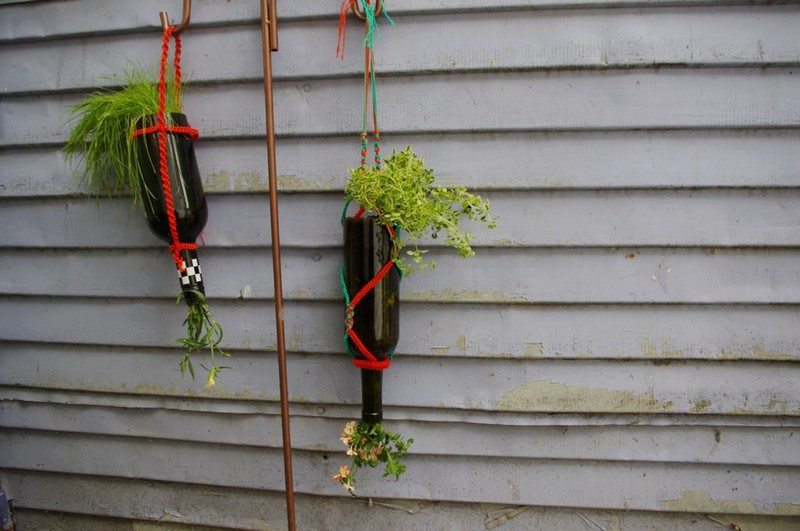
Garden Edging
Need inexpensive garden edging for a spot in your backyard? All you need to do is collect around 100 pieces of bottles. Not that difficult, eh? 🙂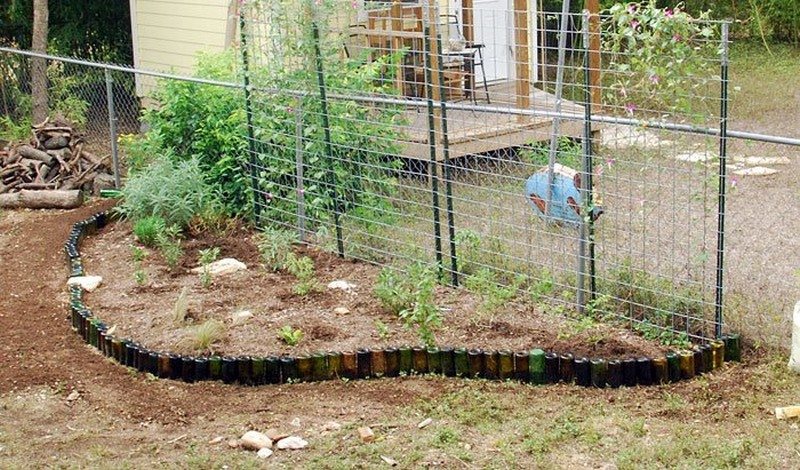
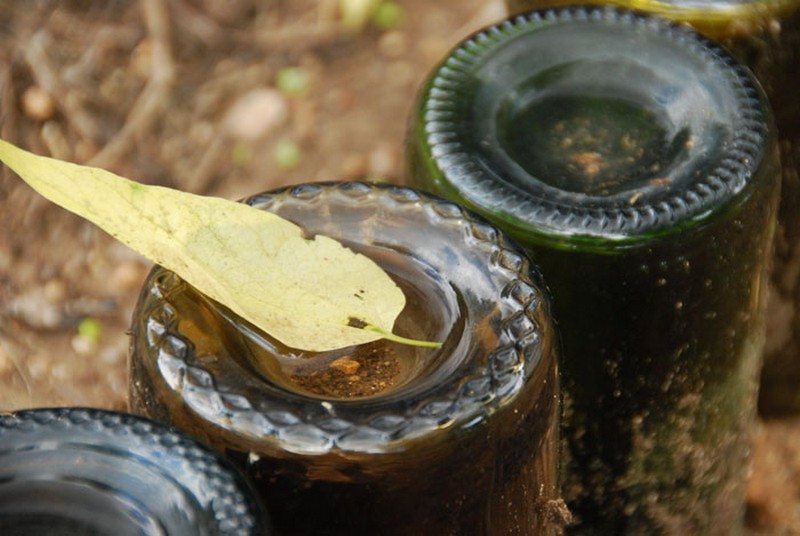
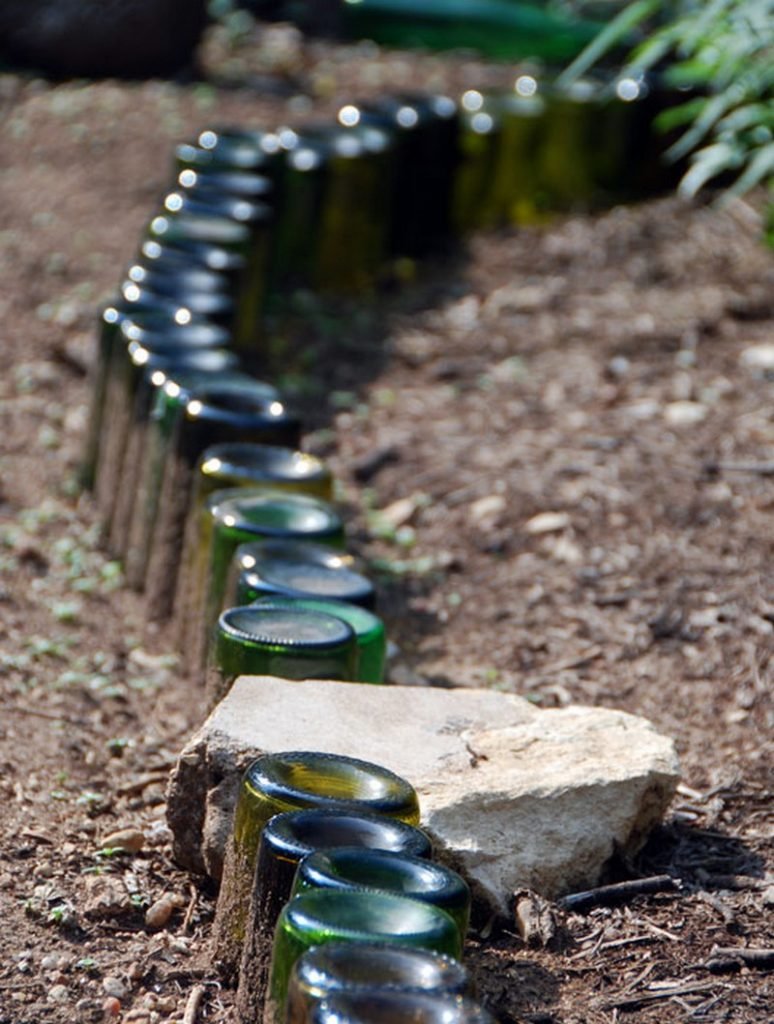
Snack Tray Spoon Rest
Now isn’t this an impressive upcycling project? These are real wine bottles, which you can find on Etsy. They are melted to serve as little snack trays where you can also place your utensils. Do you know someone who can do this? 🙂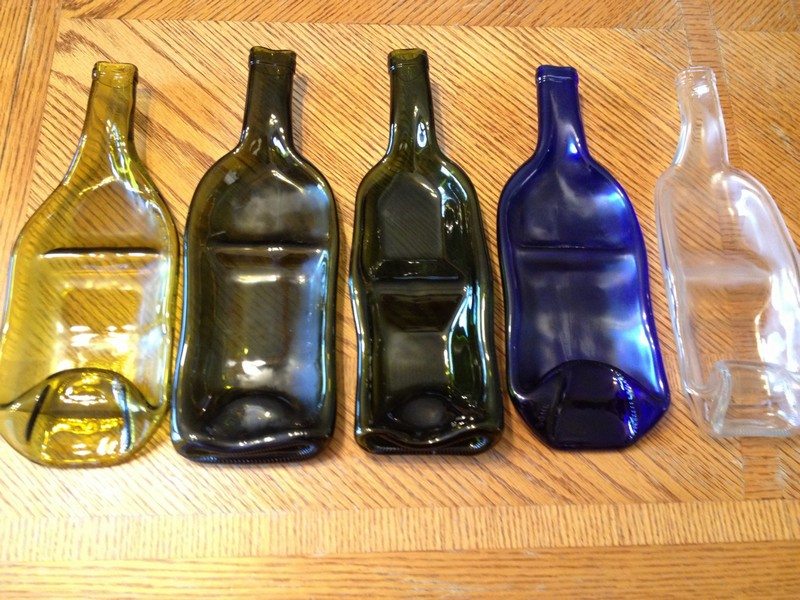
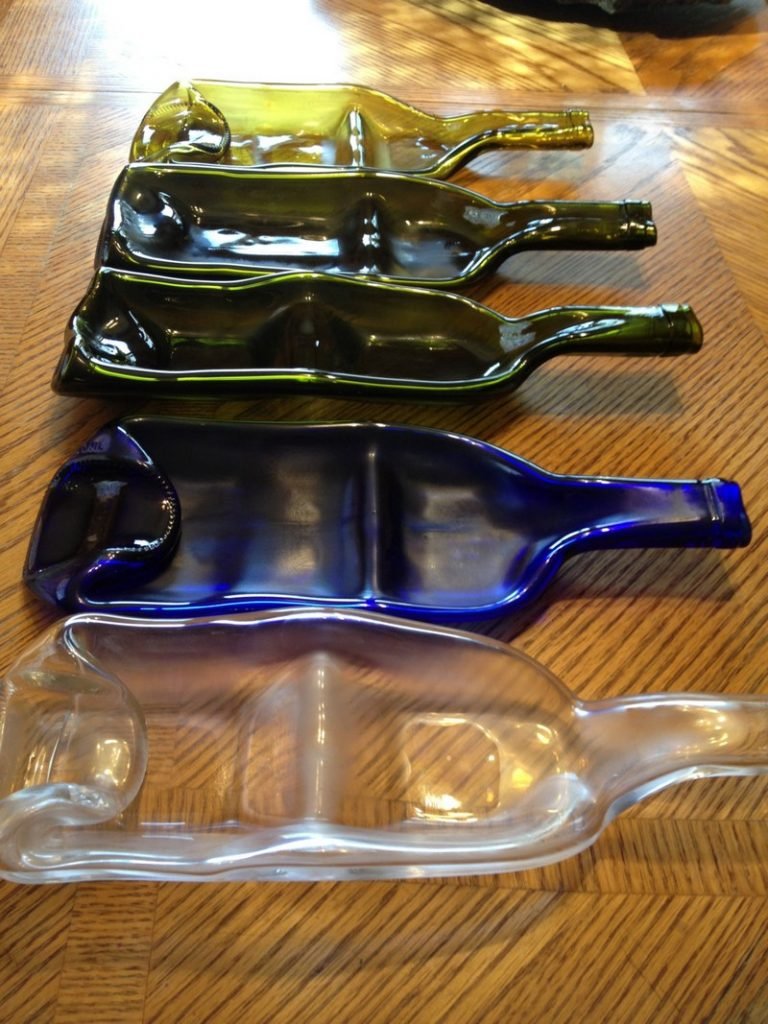
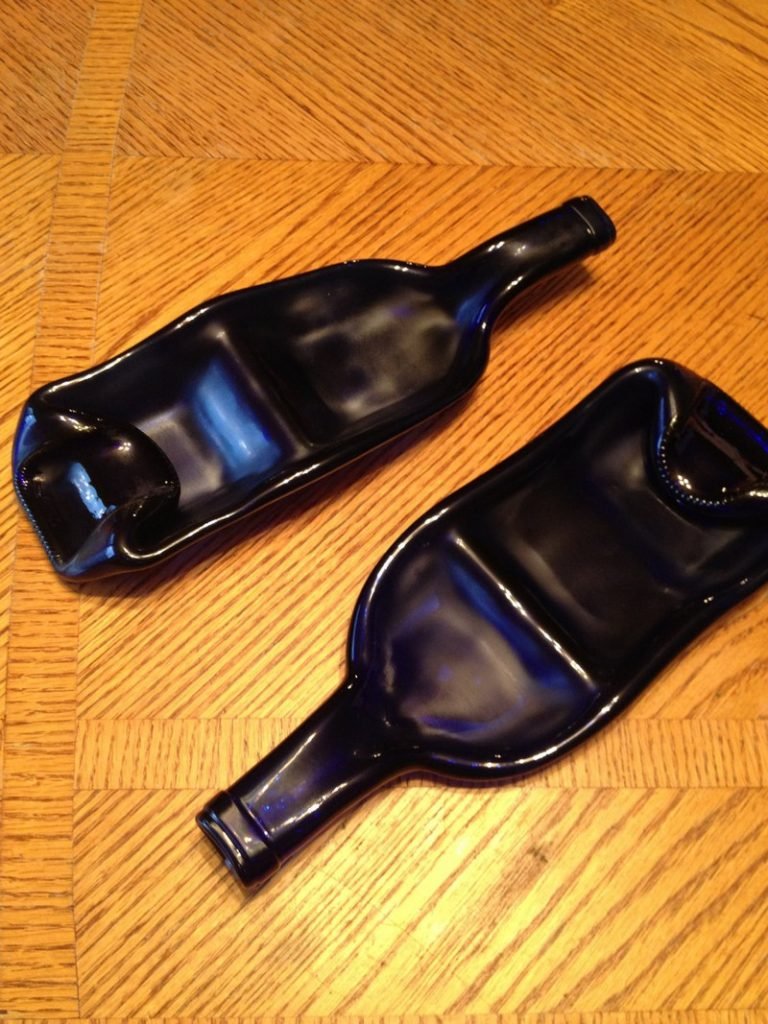
Garden Path
Do you think you can collect enough bottles for a garden path? We think they will go well together with a wine bottle garden bed edging. What do you say? 🙂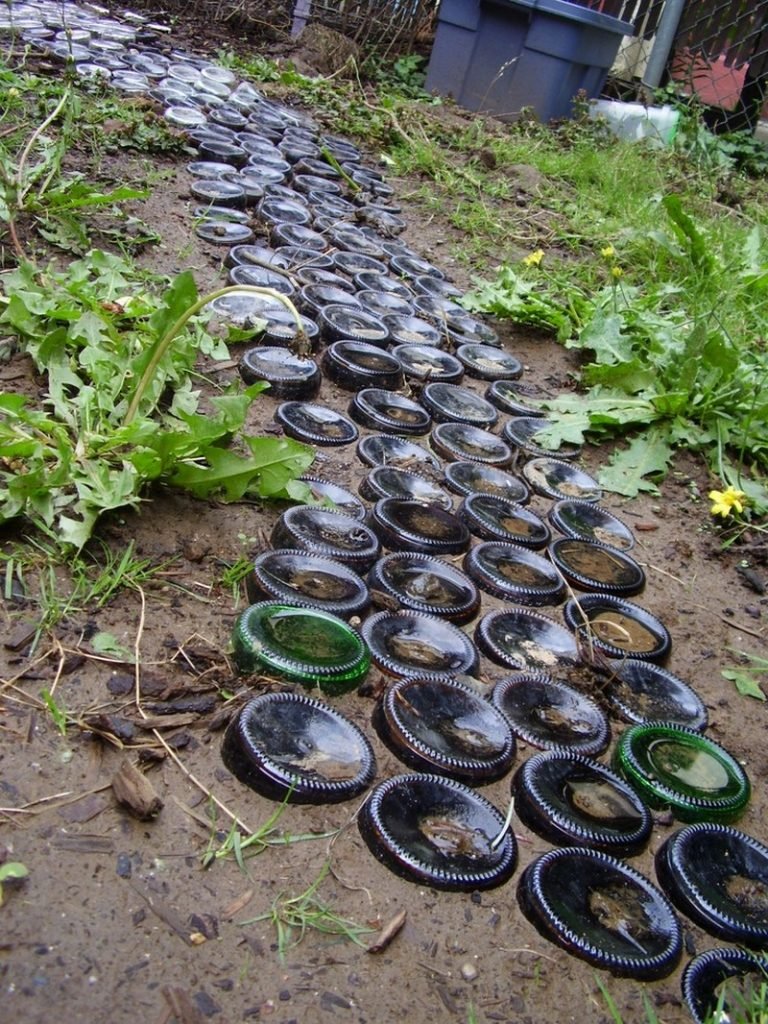
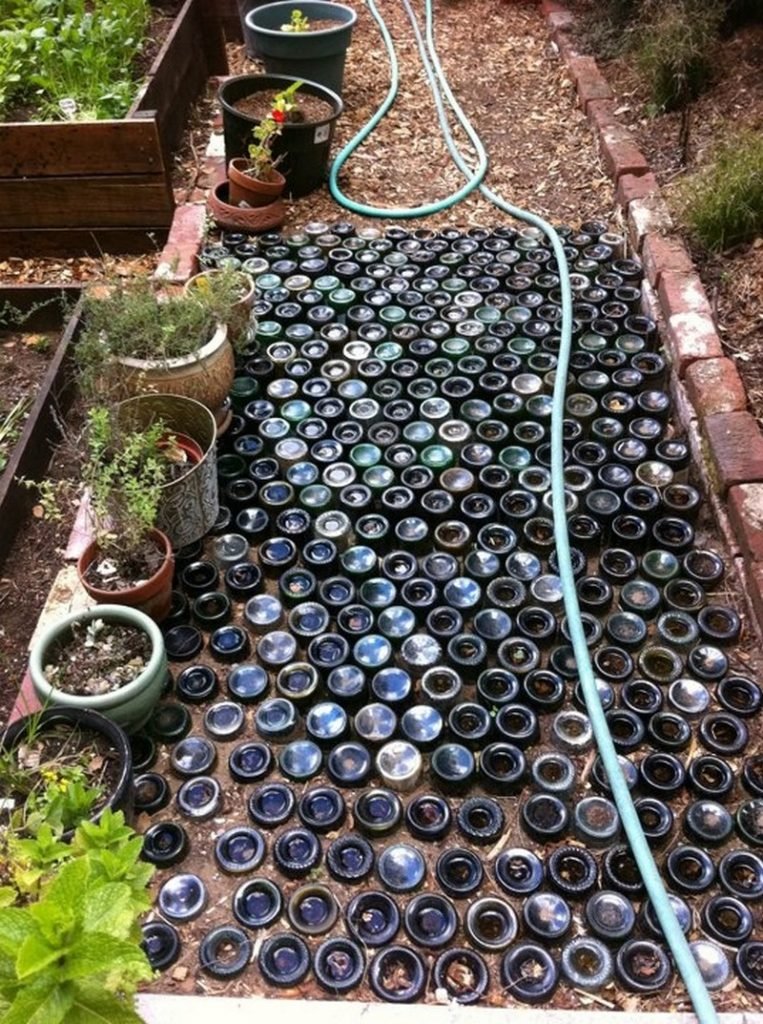
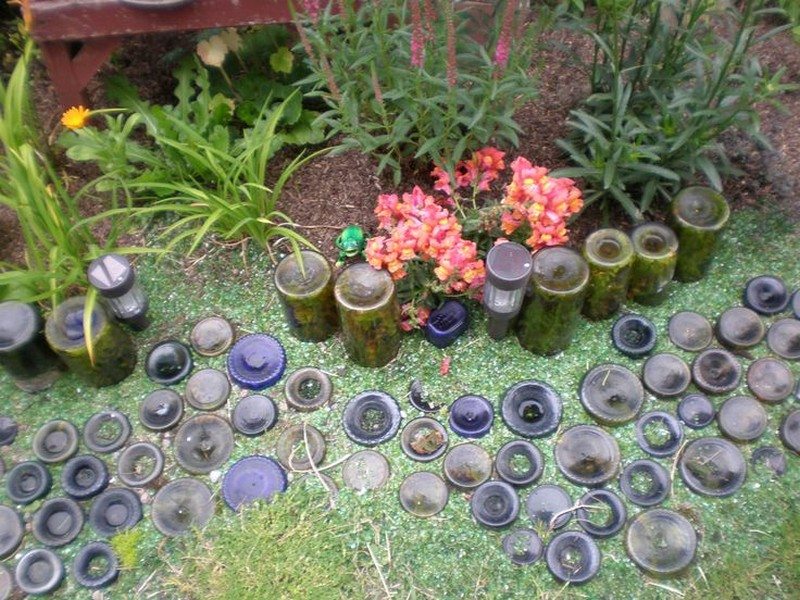
A wine bottle fence is just a fence that is made from wine bottles. They come in all kinds of colors, and they are very beautiful. The color comes from the bottles, not from the sun.
Wine bottle fences can be built in many different directions. In the direction that meets the sunrise or sunset, the colors create beautiful and radiant colors. Many people use them in the garden to create a beautiful area.
You can also use them to decorate your house or your patio. Do you need one in your yard?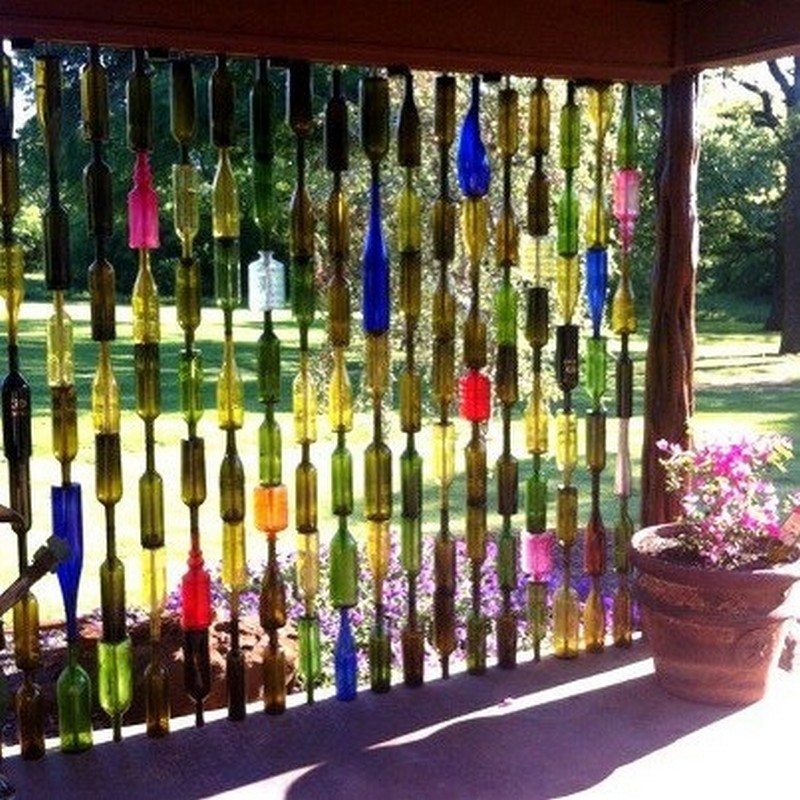
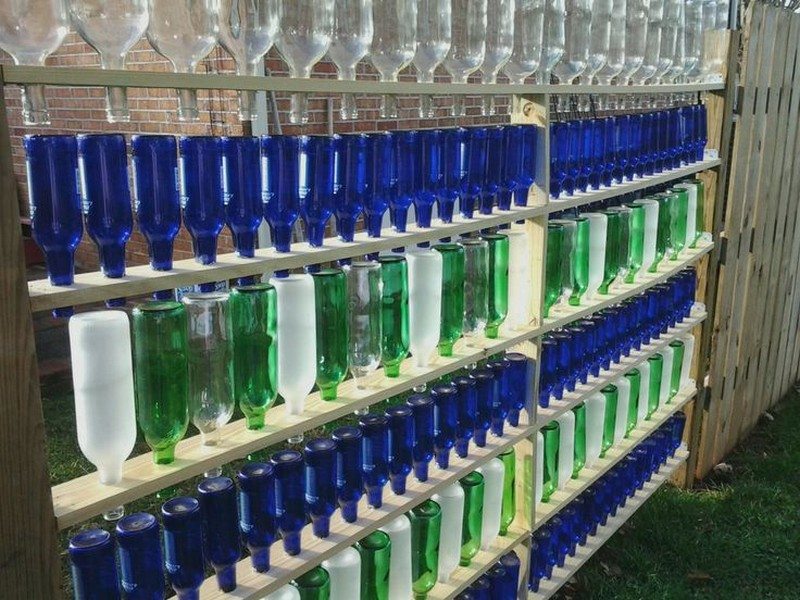
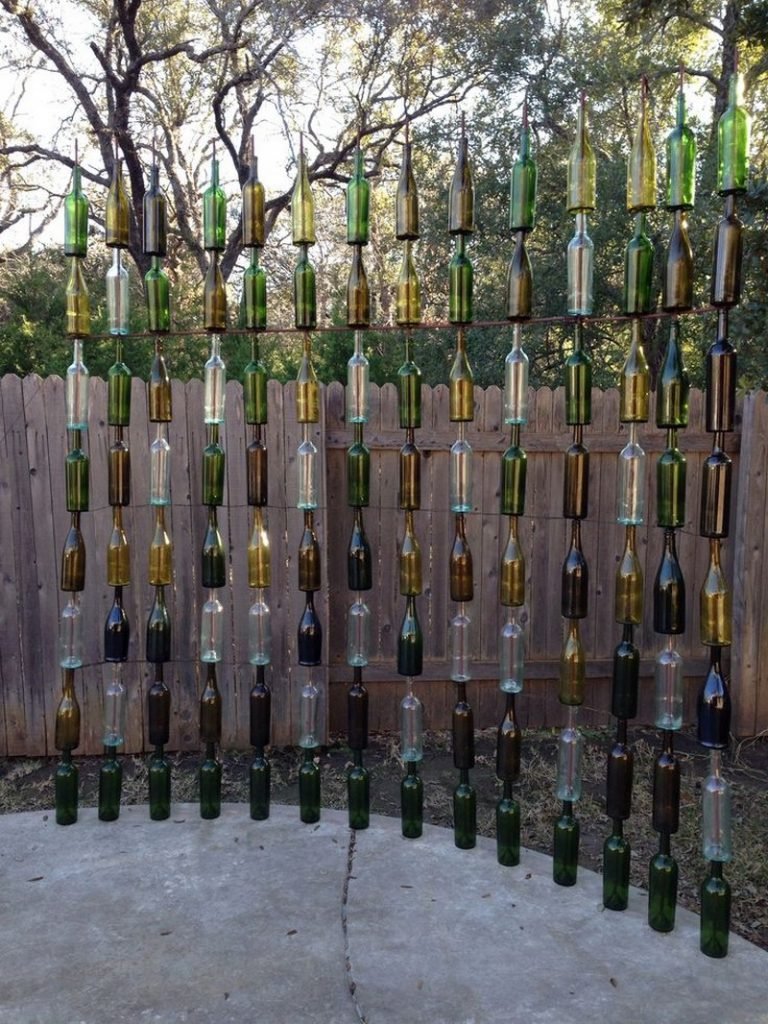
Candle Covers
Stylish candle covers, aren’t they? Wine bottles surely make the atmosphere relaxed and intimate. Perfect for dinners!
If you love the cozy glow of candlelight, you’ll be thrilled to know you can take it up a notch and build a stunning wine bottle chandelier for your dining area or patio. It’s a creative way to recycle bottles into statement lighting that turns any room into a conversation piece.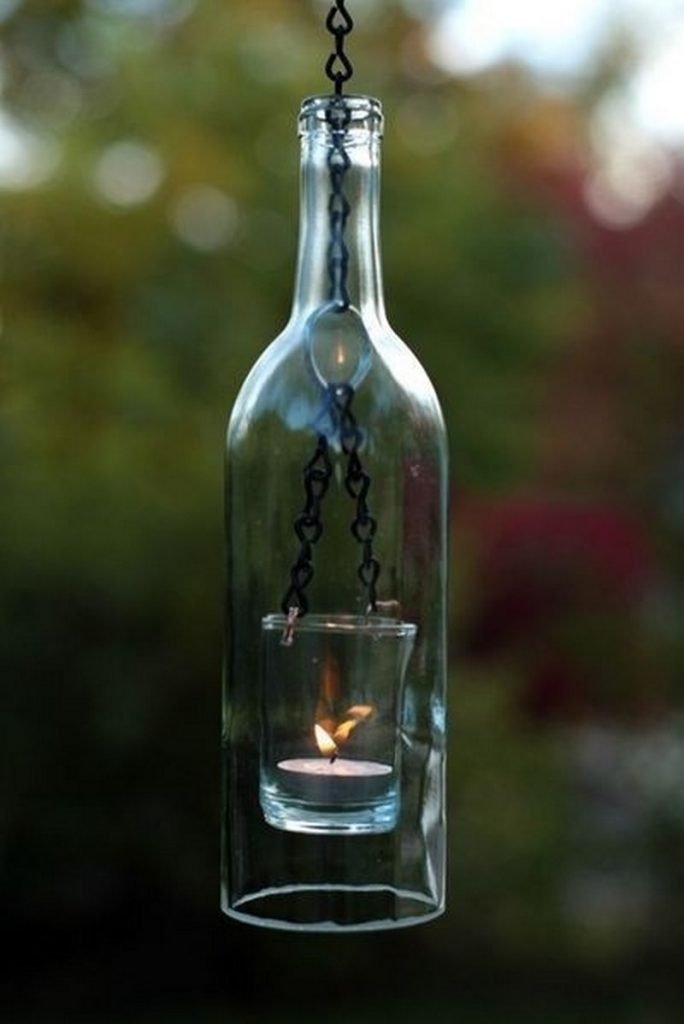
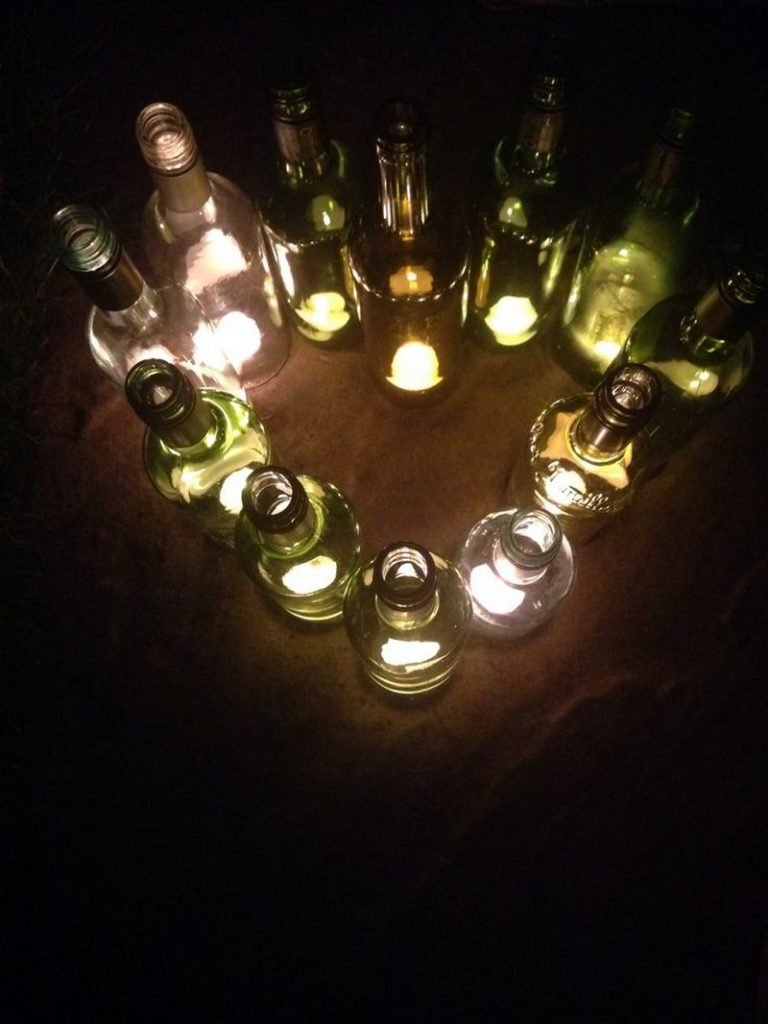
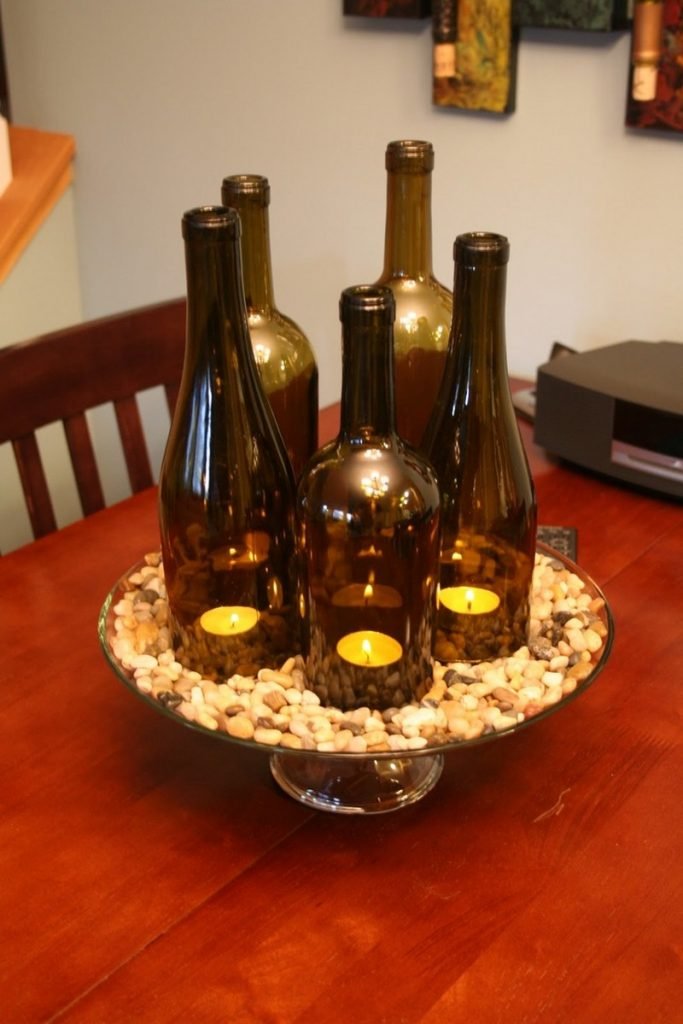
Wind Chime
Yes, you can also recycle them into wind chimes! See these beautiful ideas for inspiration. Do you need a new wind chime for your home?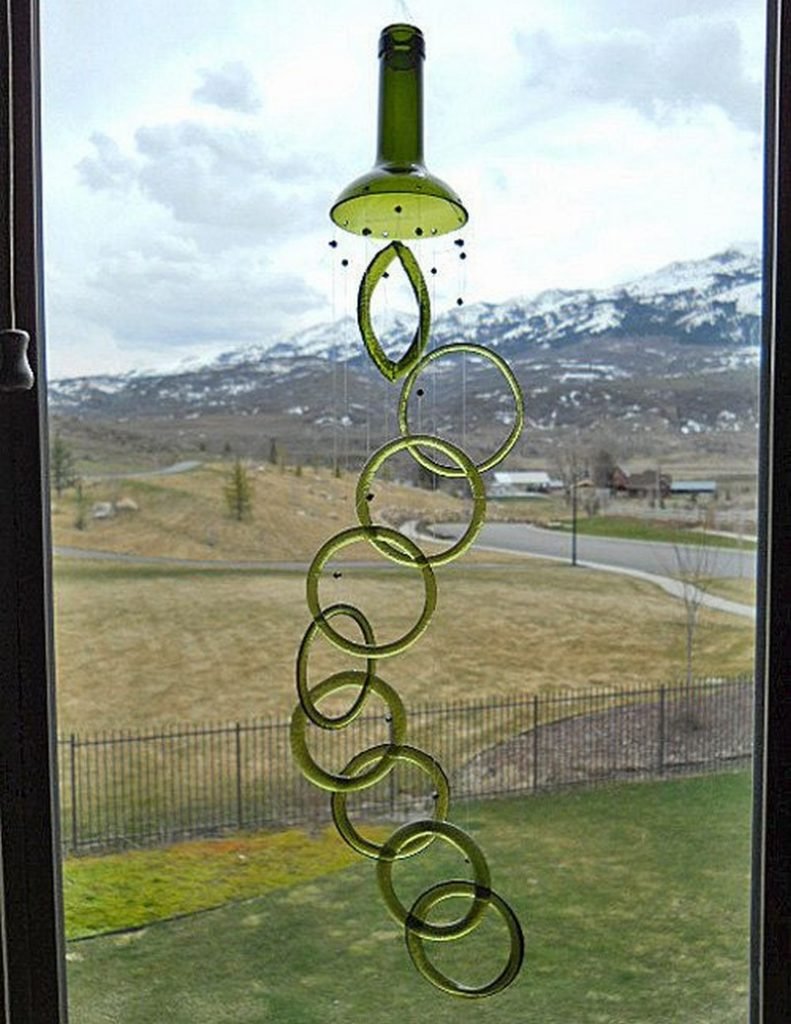
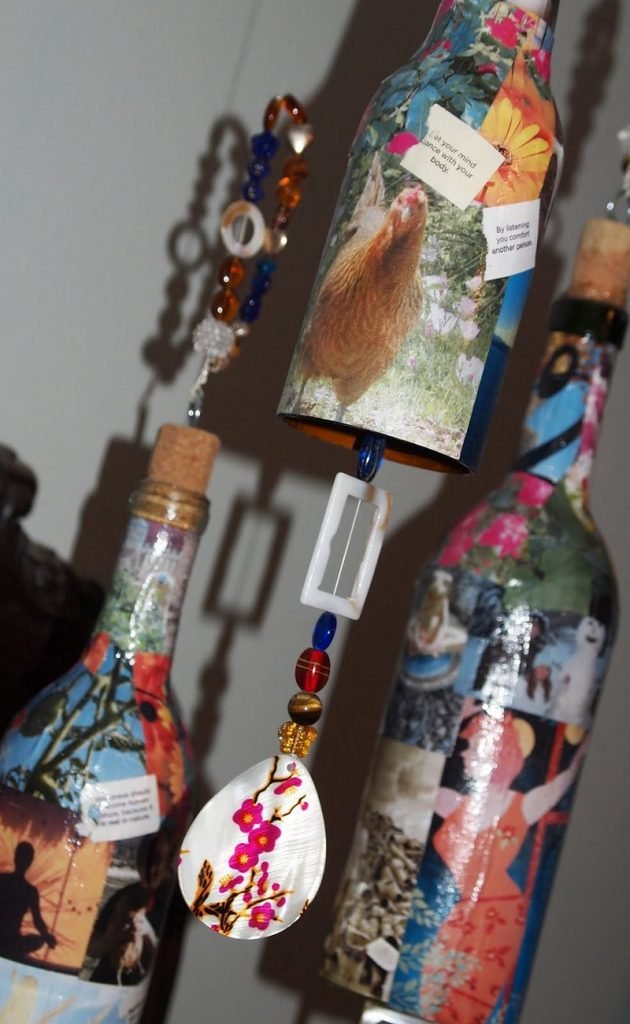
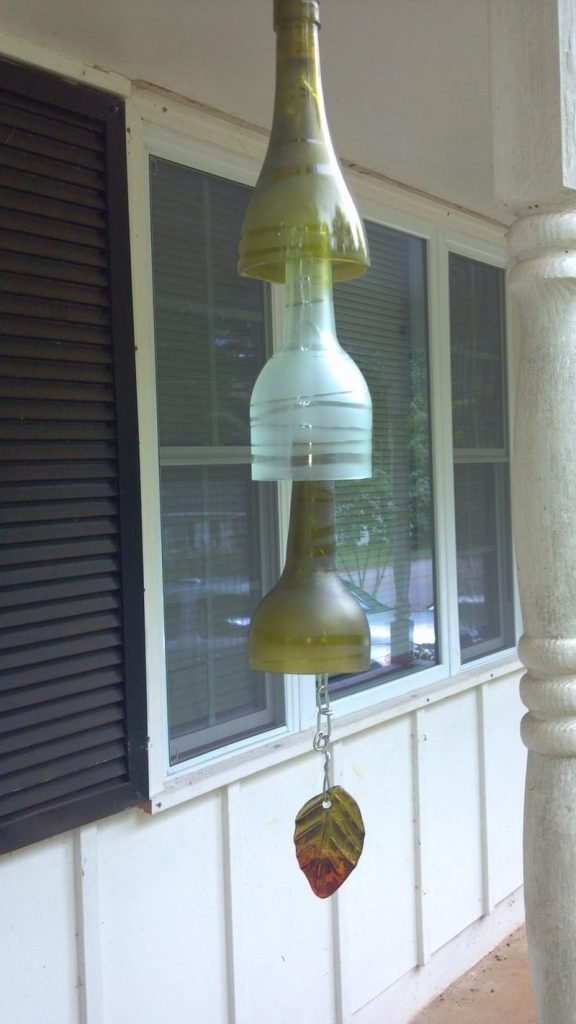
Painted Decor
Bring out the artist in you! Paint them and then decorate them even more. As you can see painted wine bottles are great decor ideas for any occasion!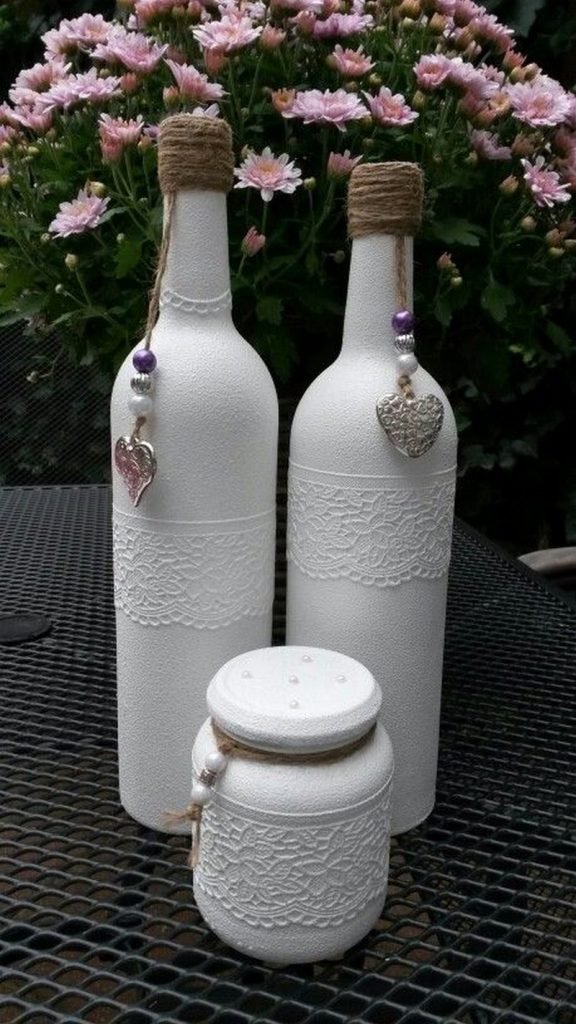
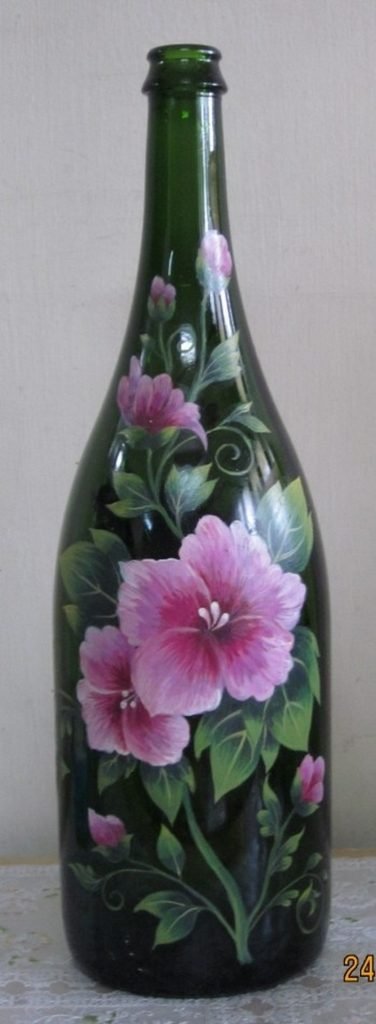
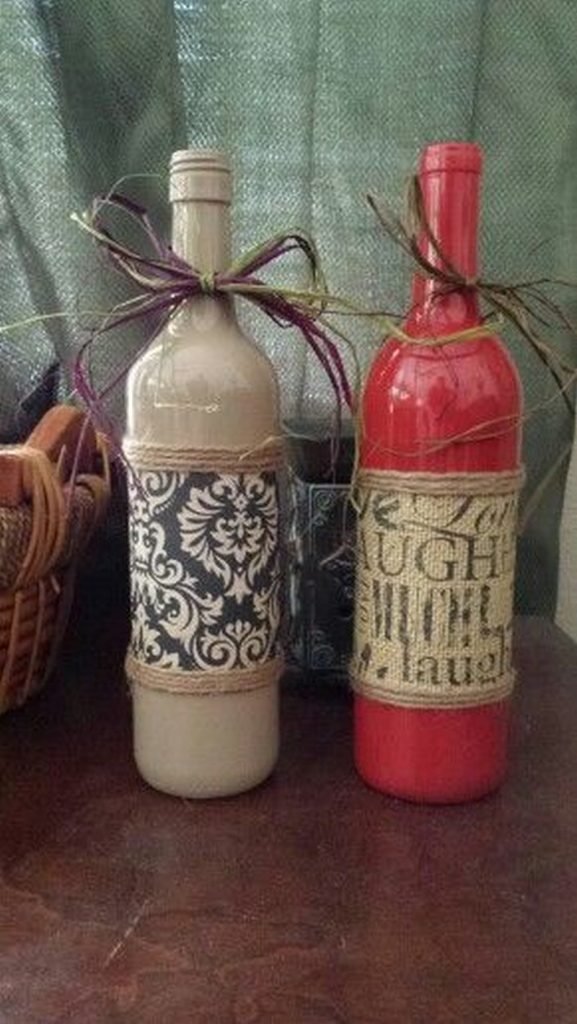
We hope you loved these ideas and that they inspired you to re-purpose your empty wine bottles. Have you found your next DIY project on this list? 🙂
How to Safely Cut and Work with Glass Bottles for DIY Projects
Repurposing wine bottles into functional and decorative pieces is a rewarding DIY project. However, cutting and handling glass requires the right techniques and safety precautions to prevent accidents. Whether you’re making planters, candle holders, or drinking glasses, following the proper steps will ensure smooth, polished results.
Choosing the Right Tools and Materials
Working with glass bottles requires specialized tools to achieve clean and precise cuts. A glass cutter is the most common tool, but a bottle cutting jig provides better control. Other essentials include fine-grit sandpaper, a heat source like boiling water or a candle, safety gloves, protective eyewear, and a dust mask. A diamond drill bit is necessary if you plan on drilling holes into bottles.
Preparing the Wine Bottle
Before cutting, remove the label by soaking the bottle in warm, soapy water. Some labels may require additional scrubbing with baking soda or adhesive remover. Once the label is gone, rinse and dry the bottle completely. Choose a stable surface to work on and ensure the bottle is free from cracks or chips, as these can affect the cutting process.
Cutting the Glass Bottle
Score the bottle using a glass cutter or a bottle-cutting jig to achieve a clean cut. Apply even pressure while rotating the bottle to create a continuous score line. Avoid pressing too hard, as deep cuts may cause uneven breakage. Once the score line is complete, separate the bottle using a heat and cold method. Pour boiling water over the score line, then immediately follow with cold water. Repeat this process until the glass naturally splits along the scored line.
An alternative method is to use a candle flame instead of boiling water. Hold the bottle over the flame, slowly rotating it for even heating. After about a minute, submerge it in ice water to encourage separation.
Smoothing the Edges
Freshly cut glass has sharp edges that need smoothing to prevent injuries. Wet sandpaper should be used, starting with 80-grit and progressing to finer grits like 220 and 400. Sand in circular motions, focusing on the cut’s inside and outside. A rotary tool with a sanding attachment can speed up the process. Continue sanding until the edges are smooth to the touch.
Drilling Holes in Wine Bottles
Some projects, like making a hanging planter or lamp, require drilling into the bottle. Place a small piece of masking tape over the drilling spot to avoid cracking. Use a diamond drill bit and start at a low speed, applying gentle pressure. Keep the drill bit lubricated with water to prevent overheating. Take breaks to cool the glass, and never force the drill through.
Safety Tips and Precautions
Glass cutting should always be done with proper safety gear, gloves, and protective eyewear. Work in a well-ventilated area and immediately clean up any glass dust or fragments. Discard any bottles that break irregularly or have jagged edges that cannot be properly smoothed. If working with power tools, ensure they are used according to manufacturer instructions.
Once you’ve mastered cutting and smoothing techniques, you can create a variety of projects. Wine bottle drinking glasses, vases, wind chimes, and even pendant lights are just a few ideas. Repurposing wine bottles becomes an enjoyable and eco-friendly craft with patience and the right tools.
The Environmental Impact of Recycling vs. Upcycling Wine Bottles
Recycling and upcycling are both sustainable ways to handle waste, but they have distinct environmental impacts. When it comes to glass, recycling requires energy and resources, while upcycling offers a creative alternative that reduces waste without additional processing. Re-purpose wine bottles instead of sending them to a recycling plant, and you can lower your carbon footprint while creating something useful and beautiful.
The Recycling Process and Its Environmental Costs
Glass is infinitely recyclable, which makes it a better material than plastic in terms of sustainability. However, the recycling process is not without its drawbacks. First, wine bottles must be collected, transported, sorted, and cleaned before they can be melted down and reshaped into new glass products. This requires significant energy, mainly from fossil fuels, which contributes to greenhouse gas emissions.
Additionally, not all glass is successfully recycled. Some facilities reject specific colors or shapes of bottles, and contamination in recycling bins can lead to discarded entire batches. Transporting glass bottles to recycling centers also adds to emissions, making the process less efficient than many assume.
The Benefits of Upcycling Wine Bottles
Upcycling eliminates the energy-intensive melting and remanufacturing process. When you re-purpose wine bottles into functional items like planters, candle holders, or drinkware, you extend the bottle’s life cycle with little to no environmental cost. This approach reduces waste, conserves resources, and limits the demand for new glass production.
Another advantage of upcycling is that it prevents bottles from ending up in landfills. Unlike plastics that break down into harmful microplastics, glass takes thousands of years to decompose. If not properly recycled, discarded bottles can accumulate in waste sites or contribute to litter in natural environments. You reduce landfill waste and environmental harm by finding ways to reuse them creatively.
Energy Savings and Carbon Footprint Reduction
Upcycling wine bottles requires minimal energy compared to recycling. Simple DIY projects like cutting bottles for garden borders or using them as vases involve no industrial processes, reducing carbon emissions. In contrast, recycling requires heating glass to over 2,500°F, a process that consumes energy and releases pollutants.
By choosing to re-purpose wine bottles instead of recycling them, you also reduce the need for raw materials. Glass is made from sand, soda ash, and limestone—resources that require mining and processing. Upcycling helps conserve these materials and reduces the environmental strain caused by their extraction.
Which Is the Better Choice?
Both recycling and upcycling play a role in sustainability, but upcycling offers a lower-energy alternative with immediate benefits. Recycling is still important for bottles that cannot be repurposed, but whenever possible, finding creative ways to re-use them is the greener option.
Re-purpose wine bottles into home décor, garden features, or even functional household items, and you’ll contribute to a more sustainable lifestyle. Small changes like this help reduce waste, conserve energy, and promote environmental responsibility.
Creative Ways to Remove Labels from Wine Bottles
If you intend to use wine bottles for do-it-yourself projects, first removing the labels is crucial. Many wine labels are made to remain firmly on, hence they are challenging to remove. Try these clever and efficient techniques to achieve clean, label-free bottles ready for upcycling rather than battling sticky residue.
The Soaking Method
Soaking the bottles in warm, soapy water is one of the simplest approaches to take off wine labels. Warm water should be filling a sink or pail; add some dish soap drops. After submerging the bottles, let them soak for at least half-hour. The warm water dissolves the glue, making label removal simple. Remove any residue with a sponge or scrub brush.
Baking Soda Solution
One excellent natural cleaner for tough labels is baking soda. Load half a cup of baking soda into a basin filled with warm water. Stir to dissolve, then immerse the wine bottles for one hour. The baking soda facilitates the scraping off of the glue by breaking it down. To get any residual bits, use your fingers or a plastic scraper.
The Oven Method
Heat can loosen the glue and simplify label removal effort. Turn the oven to 200°F and set the wine bottles on a baking pan. Leave them in for ten to fifteen minutes then use oven mitts to take them out. Peel off the labels still warm as the glass cools somewhat. Given the bottles will be hot, be careful.
The Hair Dryer Trick
A hairdryer can work as a quick alternative to the oven method. Set it to high heat and direct the airflow at the label for 30 seconds to a minute. The heat softens the glue, making it easier to peel off. If any residue remains, wipe it away with a damp cloth and rubbing alcohol.
Vinegar and Lemon Oil
If you’re looking for a natural solution, vinegar and lemon oil mixture works well. Soak a cloth in white vinegar, wrap it around the label, and let it sit for 15 minutes. The acidity weakens the adhesive, allowing you to remove the label easily. For any remaining sticky residue, apply a few drops of lemon oil and rub it off with a paper towel.
Rubbing Alcohol or Acetone
For harsh adhesive residue, rubbing alcohol or acetone (nail polish remover) can be highly effective. Apply a small amount to a cotton ball or cloth and rub the sticky area until it dissolves. This method works well for glossy labels with strong glue. Be sure to rinse the bottles thoroughly after using these chemicals.
Steel Wool and Dish Soap
Try scrubbing with fine steel wool and dish soap for labels that will not budge. This method is beneficial for textured labels that are difficult to peel. Apply soap directly to the bottle and gently scrub in circular motions until the adhesive is gone. Rinse well to avoid leaving behind any soap residue.
Once you’ve removed the labels, rinse and dry the bottles before using them for your DIY projects. Whether you’re making candle holders, planters, or wind chimes, clean bottles provide a polished, professional look. Re-purpose wine bottles confidently, knowing they are free from sticky residue and ready to be transformed into something extraordinary.
Conclusion
One innovative and environmentally responsible approach to cutting waste is to repurpose wine bottles, which will provide your house with unusual décor and utility. Every idea offers something that would otherwise be thrown second life — from planters to lighting fixtures to ornamental embellishments. Upcycling wine bottles not only helps the environment but also allows you to show your inventiveness in fresh and motivating ways from among many alternatives.
If you liked these ideas, you might also like these recycling ideas…


